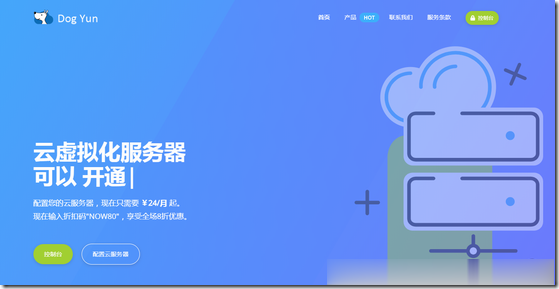LibraryRed Capitalism The Fragile Financial Foundation of China´s Extraordinary Rise
Contents
Preface
List of Abbreviations
Chapter 1 : Looking Back at the Policy of Reform and Opening
Thirty Years of Opening up: 1978–2008
Thirteen Years of Reform: 1992–2005
The End of Reform: 2005
China is a Family Business
Endnotes
Chapter 2 : China’ s Fortress Banking System
Banks are China’ s Financial System
Crisis: The Stimulus to Bank Reform, 1988 and 1998
China’ s Fortress Banking System in 2009
The Sudden thirst for Capital and Cash Dividends, 2010
Endnotes
Chapter 3 : The Fragile Fortress
The People’ s Bank of China Restructuring Model
The Ministry of Finance Restructuring Model
The “Perpetual Put” Option to the PBOC
China’ s Latest Banking Model
Implications
Endnotes
Chapter 4 : China’ s Captive Bond Market
Why does China have a Bond Market?
Risk Management
The Base of the Pyramid: “Protecting” Household Depositors
Endnotes
Chapter 5 : The Struggle over China’ s Bond Markets
The CDB, the MOF and the Big 4 Banks
Local Governments Unleashed
China Investment Corporation: Lynchpin of China’ s Financial System
Cycles in the Financial Markets
Endnotes
Chapter 6 : Western Finance, SOE Reform and China’ s Stock MarketsChina’ s Stock Markets Today
Why does China have Stock Markets?
What Stock Markets gave China
Endnotes
Chapter 7 : The National Team and China’ s Government
Zhu Rongji’ s Gift: Organizational Streamlining, 1998How the National Team, Its Families and Friends BenefitA Casino or a Success, or Both?
Implications
Endnotes
Chapter 8 : The Forbidden City
The Emperor of Finance
Behind the Vermillion Walls
An Empire Apart
Cracks in the Walls
Imperial Ornaments
Endnotes
Appen dix
Select Bibliography
Index
Copyright © 2011 John Wiley & Sons (Asia) Pte. Ltd.
Published in 2011 by John Wiley & Sons (Asia) Pte. Ltd.
2 Clementi Loop, # 02-01, Singapore129809
All rights reserved.
No part of this publication may be reproduced, stored in a retrieval system, or transmitted inany form or by any means, electronic, mechanical, photocopying, recording, scanning, orotherwise, except as expressly permitted by law, without either the prior written permission ofthe Publisher, or authorization through payment of the appropriate photocopy fee to theCopyright Clearance Center. Requests for permission should be addressed to the Publisher, JohnWiley & Sons (Asia) Pte. Ltd. , 2 Clementi Loop, # 02-01, Singapore 129809, tel: 65-6463-2400,fax: 65-6463-4605, e-mail: enquiry@wiley.com.
This publication is designed to provide accurate and authoritative information in regard to thesubject matter covered. It is sold with the understanding that the publisher is not engaged inrendering professional services. If professional advice or other expert assistance is required,the services of a competent professional person should be sought.
Neither the author nor the publisher are liable for any actions prompted or caused by theinformation presented in this book. Any views expressed here in are those of the author and donot represent the views of the organizations they work for.
Other Wiley Editorial Offices
John Wiley & Sons, 111 River Street, Hoboken, NJ07030, USA
John Wiley & Sons, The Atrium, Southern Gate, Chichester, West Sussex, P019 8SQ, United KingdomJohn Wiley & Sons (Canada) Ltd. , 5353 Dundas Street West, Suite 400, Toronto, Ontario, M9B 6HB,Canada
John Wiley & Sons Australia Ltd, 42 McDougall Street, Milton, Queensland 4064, AustraliaWiley-VCH, Boschstrasse 12, D-69469 Weinheim, Germany
Library of Congress Cataloging-in-Publication Data
ISBN 978-0-470-82586-0 (Hardcover)
ISBN 978-0-470-82894-6 (e-book)
ISBN 978-0-470-82893-9 (e-book)
ISBN 978-0-470-82895-3 (e-book)
To John Wilson Lewis
Preface
After three rounds of Privatizing China, our book about China’ s stock markets, we felt like wewanted to look into something new. Since we took our first look at the stock markets in 1999,we have been interested to note the lack of work on the financial side of China’ s miracle thatgets beyond the macroeconomics of things. We are the first to agree that living and working inthe country for 25 years may not qualify us as experts in economics. We do believe, however,that our experience has given us a feel for how China’ s political elite manages money and thecountry’ s economy. Having worked in banks for longer than we care to remember, we wanted totry to understand how China and its ruling class finance themselves and we knew we had to beginwith the banks since, in truth, they are China’ s financial system. Those looking for tales ofcorruption and princelings with their hands in the till will be disappointed though. We thinkthat the financial side of the story behind a 30-year boom that changed the lives of onebillion people is much more interesting; so this is our effort at staking out modern China’ spolitical economy “inside the system. ”
We do not believe in Chinese exceptionalism. China’ s economy is no different from any other,in spite of the inevitable Chinese characteristics. If there are such things as economic laws,they work just as well in China and for Chinese businesses as they do in other markets. We alsodo not believe in the recent triumphalism of China’ s bankers and many of its leaders; this isonly a diplomatic ploy. China’ s banks survived the global financial crisis, as one seniorbanker has publicly stated, simply because the financial system is closed off from the world.Having seriously studied the collapse of Mexico’ s peso in 1994, the Asian Financial Crisis of1997 and those sovereign-debt crises that have followed, China’ s political elite has nointention of exposing itself to international capital markets. The domestic economy and marketsare, and will continue to be, most deliberately closed off. With a non-convertible currency,minimal foreign participation and few overseas assets beyond US Treasuries and commodityinvestments that will neither be marked-to-market nor sold, why shouldn’ t the system survive amajor international crisis better than open economies? China’ s financial system is designed sothat no one is able to take a position opposite to that of the government.
Of course, the private export-oriented sector suffered massive losses in jobs, earnings and theclosure of small companies in 2008 and 2009. But China’ s banks were not exposed in anymaterial way to this sector. It is a simple fact that China’ s financial system and its stock,bond and loan markets cater only to the state sector, of which the “National Champions”represent the reddest of the Red. These corporations, the heart of China’ s state-ownedeconomy, are “inside the system. ” The private economy, no matter how vibrant, is “outsidethe system” and, in fact, serves at the will of the system. If nothing else, the events of thefall of 2008 added an additional seal to the Party’ s determination to sustain a closed,tightly controlled, economy. “Don’ t show me any failed models, ” is the refrain of theChinese officialdom these days. But is China’ s own financial system a model for the world tostudy? Can China be thought of as an economic superpower, either now or in the future, withsuch a system?
With this sort of question in mind, we began to look at the financial history of the People’ sRepublic of China. We were fortunate that 2008 was the thirtieth anniversary of China’ s highlysuccessful Reform and Opening Policy, so there were many excellent retrospectives prepared bythe government agencies. The People’ s Bank of China, in particular, produced very usefulmaterial, some of which took one of us back 30 years to Beijing University where his study ofChinese banks began. We hasten to emphasize that all the information used in writing this bookderives from purely public sources. In China, all of the important ministries, corporations andbanks maintain excellent websites, so data is just out there in the wind waiting to bedownloaded. In particular, China Bond and the National Association of Financial MarketInstitutional Investors (NAFMII) , a sub-set of the People’ s Bank, have extensive websitesproviding access to information, in both Chinese and English, on China’ s fixed-income markets.Data for the stock markets have always been plentiful and, we believe, accurate. Again, Wind
Information, China’ s Bloomberg equivalent, has been a rich source for us. Then, there are theaudited financial statements of China’ s banks, all available online since the respectivelistings of each bank. Reading these statements has been highly educational. We stronglyencourage others, including China’ s regulators, to do the same.
So the modern age of technology provided all the dots that, linked together, present a pictureof the financial sector. How they are connected in this book is purely the authors’ collectiveresponsibility: the picture presented, we believe, is accurate to the best of our professionaland personal experience. We hope that this book will, like Privatizing China, be seen as aconstructive outsiders’ view of how China’ s leadership over the years has put together whatwe believe to be a very fragile financial system.
For all the fragility of the current system, however, one of us is always reminded that hisjourney in China began in Beijing back in 1979 when the city looked a lot like Pyongyang. WithNorth Korea in the headlines again for all the wrong reasons, it is worth remembering andacknowledging the tremendous benefits the great majority of Chinese have reaped as a result ofthe changes over the past 30 years. This can never be forgotten, but it should also not be usedas an excuse to ignore or downplay the very real weaknesses lying at the heart of the financialsystem.
We would like to thank those who have helped us think about this big topic, including in noparticular order Kjeld Erik Brosdgaard, Peter Nolan, Josh Cheng, Jean Oi, Michael Harris,Arthur Kroeber, Andrew Zhang, Alan Ho, Andy Walder, Sarah Eaton, Elaine La Roche and VictorShih. Over the years we have grown to greatly appreciate our friends at John Wiley, startingwith Nick Wallwork, our publisher who kickstarted our writing career in 2003, Fiona Wong, JulesYap, Cynthia Mak and Camy Boey. Professionals all, they made working on this book easy andenjoyable. John Owen was an unbelievably quick copyeditor and Celine Tng, our proofreader, gave“detail-oriented” a whole new definition! We thank you all for your strong support. What wehave written here, however, remains our sole responsibility and reflects neither the views ofour friends and colleagues, nor those of the organizations we work for.
We have dedicated the book to John Wilson Lewis, Professor Emeritus of Political Science atStanford University. John was the catalyst for Carl’ s career in China and, indirectly,Fraser’ s as well. Without his support and encouragement, it is fair to say that this book andanything else we have done over the years in China might never have happened. We both continueto be very much in debt to our wives and families who have continued to at least tolerate ourcurious interest in Chinese financial matters. We promise to drop the topic for a while now,even though we are well aware that there remains much that needs to be looked at in thefinancial space, including trust companies and asset-transfer exchanges. May be next time.Beijing and Singapore
October 2010
List of Abbreviations
ABCAgricultural Bank of ChinaAMCasset-management companyBOCBank of ChinaCBRCChina BankingRegulatory CommissionCDBChina Development BankCGBChinese government bondCICChina InvestmentCorporationCPcommercial paperCSRCChina Securities Regulatory CommissionICBCIndustrial andCommercial Bank of ChinaMOFMinistry of FinanceMORMinistry of RailwaysMTNmedium-term notesNAVnet asset valueNDRCNational Development and Reform CommissionNPCNational People’ s CongressNPLnon-performing loanPBOCPeople’ s Bank of ChinaSAFEState Administration for Foreign ExchangeSASACState-owned Assets Supervision and Administration Commission
- LibraryRed Capitalism The Fragile Financial Foundation of China´s Extraordinary Rise相关文档
- 操作手册RED SCARLET-X 摄影机 V205 中文操作手册
- 产区Red wine knowledge 1txt
- Kotaro押尾的《Red Shoes Dance》吉他谱
- roseA Red ,Red Rose 赏析
- 飞行员The Red Baron《红男爵(2008)》完整中英文对照剧本
- 学生小学三年级英语:Unit6 lesson1 It’s red 教学设计
gcorelabs:美国GPU服务器,8张RTX2080Ti,2*Silver-4214/256G内存/1T SSD/
gcorelabs提供美国阿什本数据中心的GPU服务器(显卡服务器),默认给8路RTX2080Ti,服务器网卡支持2*10Gbps(ANX),CPU为双路Silver-4214(24核48线程),256G内存,1Gbps独享带宽仅需150欧元、10bps带宽仅需600欧元,不限流量随便跑吧。 官方网站 :https://gcorelabs.com/hosting/dedicated/gpu/ ...

DogYun(300元/月),韩国独立服务器,E5/SSD+NVMe
DogYun(中文名称狗云)新上了一批韩国自动化上架独立服务器,使用月减200元优惠码后仅需每月300元,双E5 CPU,SSD+NVMe高性能硬盘,支持安装Linux或者Windows操作系统,下单自动化上架。这是一家成立于2019年的国人主机商,提供VPS和独立服务器租用等产品,数据中心包括中国香港、美国洛杉矶、日本、韩国、德国、荷兰等。下面分享这款自动化上架韩国独立服务器的配置和优惠码信息。...

盘点618年中大促中这款云服务器/VPS主机相对值得选择
昨天有在"盘点2021年主流云服务器商家618年中大促活动"文章中整理到当前年中大促618活动期间的一些国内国外的云服务商的促销活动,相对来说每年年中和年末的活动力度还是蛮大的,唯独就是活动太过于密集,而且商家比较多,导致我们很多新人不懂如何选择,当然对于我们这些老油条还是会选择的,估计没有比我们更聪明的进行薅爆款新人活动。有网友提到,是否可以整理一篇当前的这些活动商家中的促销产品。哪些商家哪款产...

-
如何免费开通黄钻怎么免费开通黄钻bluestacksBluestacks安卓模拟器是什么机型的?彩信中心移动的彩信中心是?主页是?收不到彩信,怎么设置?ejb开发什么是EJB?它是干什么的?和JAVA,JSP有关系吗?他们各有什么特点和用途?bt封杀BT下载可以封杀迅雷吗?什么原理?能破吗?linux虚拟机怎么样在Linux下安装虚拟机二层交换机什么是二层交换机云挂机云挂机每天2+元你提了吗?blogcnCK沉珂是个怎样的一个人?之后又是怎样的 ?微信怎么看聊天记录怎样才能调取微信聊天记录